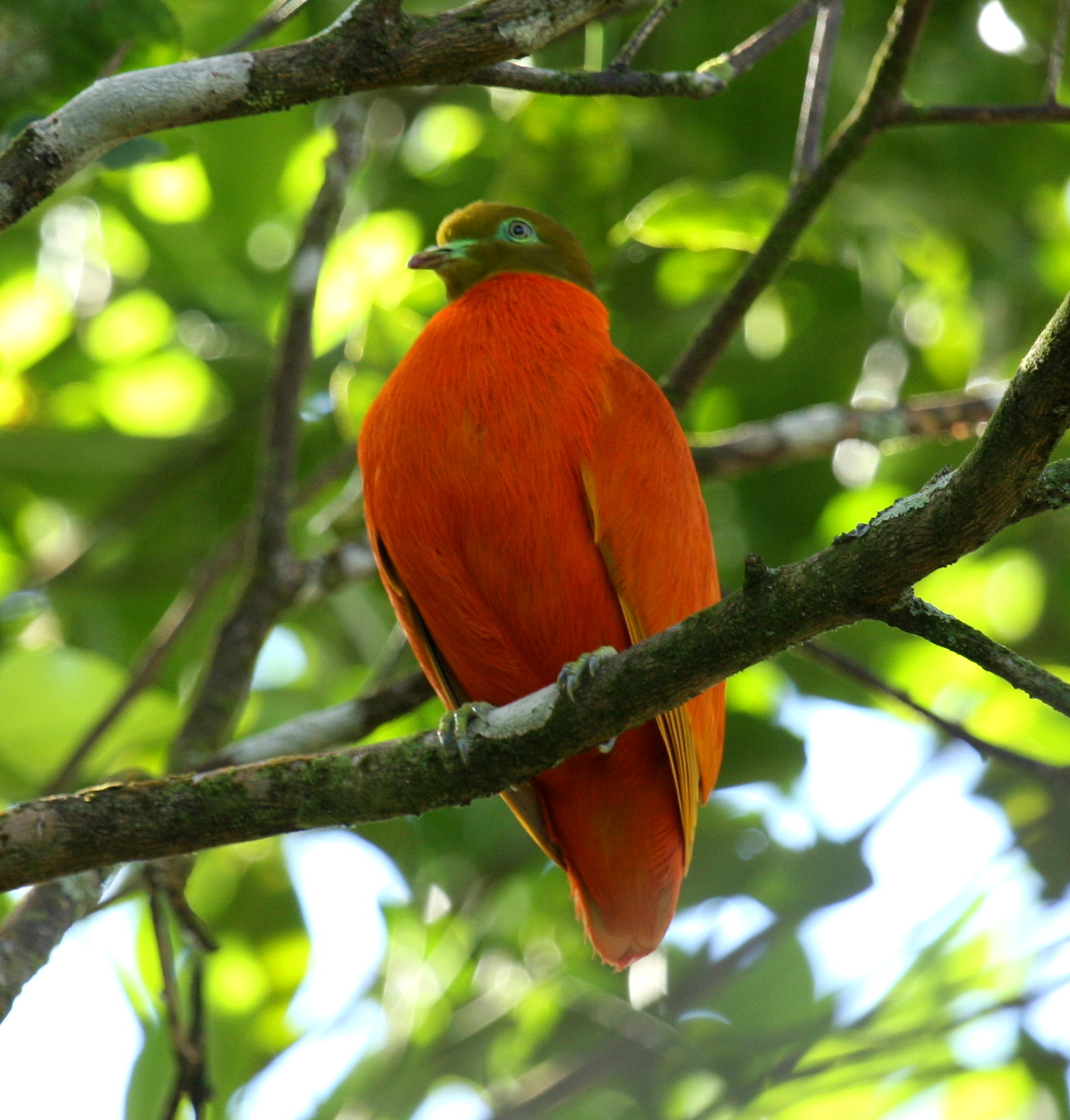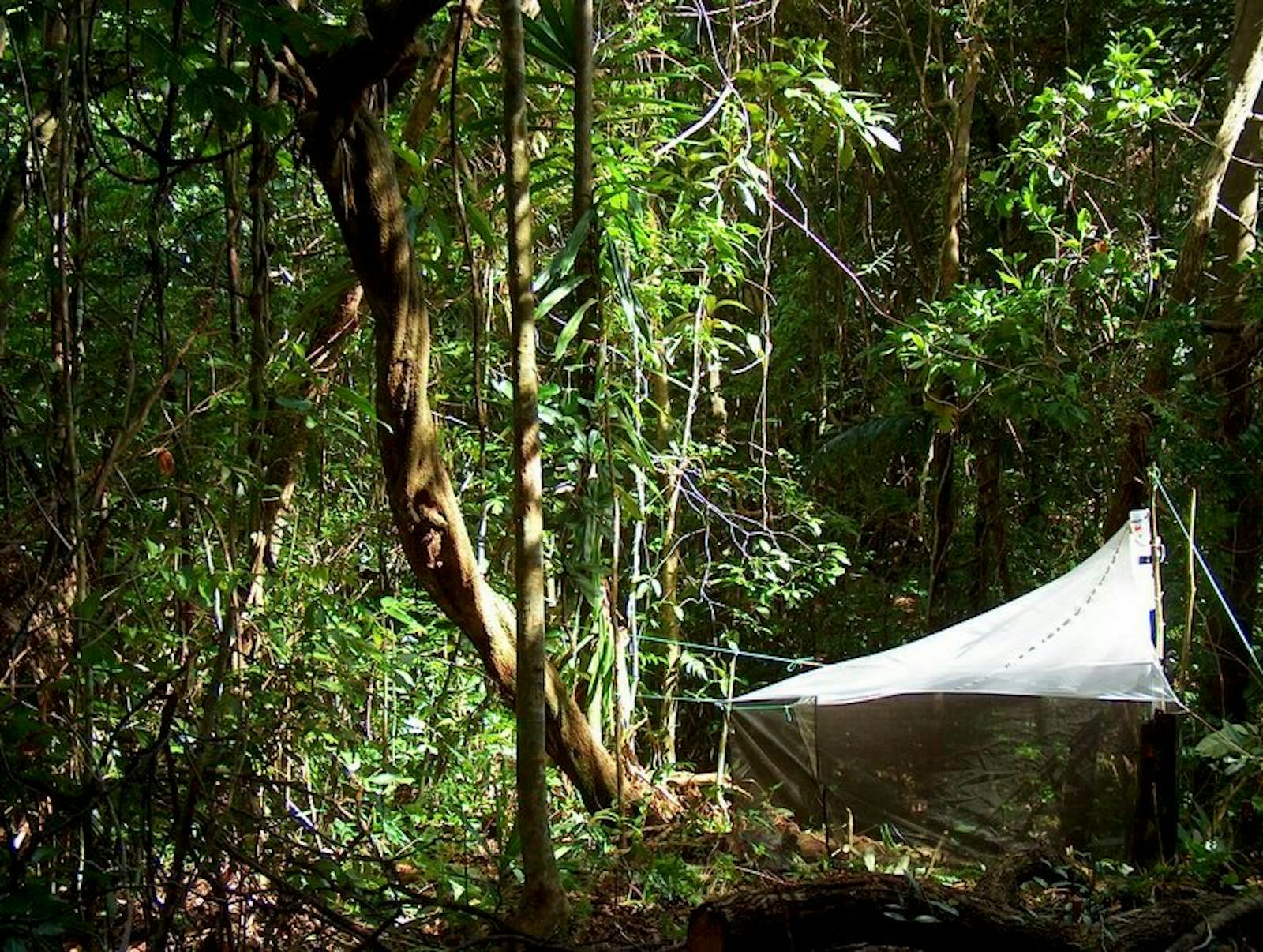Fiji Tropical Moist Forests
The ecoregion’s land area is provided in units of 1,000 hectares. The conservation target is the Global Safety Net (GSN1) area for the given ecoregion. The protection level indicates the percentage of the GSN goal that is currently protected on a scale of 0-10. N/A means data is not available at this time.
Bioregion: Fiji & Tongan Tropical Islands (OC6)
Realm: Oceania
Ecoregion Size (1000 ha):
1,164
Ecoregion ID:
622
Conservation Target:
84%
Protection Level:
1
States: Fiji, Wallis and Futuna
The golden and orange doves of Fiji bedazzle anyone that could catch a glimpse. Brilliantly colored, they surprisingly blend in unseen in dappled forest canopies. These Fijian rainforest canopies of Fiji are tall, wet, and dense. These forests support a blend of ancient lineages of plants and animals, such as the primitive Agathis and Degenera trees, with more typical taxa associated with oceanic islands, such as honeyeaters and white-eyes.
Out of over 300 islands, the islands of Viti Levu and Vanua Levu occupy 78% of the ecoregion’s land area and support the tallest mountain at 1,323 m. The Fijian archipelago’s oceanic isolation, large size, complex topography, and unusual biogeographic history have all contributed to the evolution of a highly endemic biota. Over half of the vascular plant species are endemic, with many single-island and single-site endemics.

The flagship species of the Fiji Tropical Moist Forests ecoregion is the Taveuni orange dove. Image credit: Aviceda, Creative Commons
Moist tropical forest occurs as lowland rain forest, montane rain forest, and cloud forest in Fiji, Rotuma, and Wallis and Futuna. Common tree species in lowland forest include Degeneria vitiensis, Pandanus joskei, Myristica macrantha, Endiandra gillespiei, and Agathis macrophylla. Montane rain forests are dominated by Agathis vitiensis, Podocarpus spp., Calophyllum vitiense, Endospemum macrophyllum, and Metrosideros collina. Cloud forest is scattered above 600–900 m on the ridges and peaks of Fiji’s largest islands and is dominated by species such as tree ferns (Cyathea spp.), Dysoxylum gillespianum, Macaranga seemannii, and Leptopteris ferns with an abundance of climbing Freycinetia species.
There are 1,769 (1,350 in moist forest) vascular plants native to Fiji, about 23% of which are endemic. Fiji is notable for having an endemic family of primitive tree, the Degeneraceae, which is distantly related to magnolias. Fiji has 10 gymnosperm species and 24 native palm species, the latter group all unique to the islands.
Twenty-five birds occur only in Fiji (plus one on Rotuma), while most of the reptiles, amphibians, bats, and invertebrates are unique to the islands. Fiji has a ground and a tree frog, a burrowing elapid snake, the Pacific boa, and the spectacular crested and banded iguanas, the latter possibly originating from South America! Twelve of the 27 land birds are endemic, including the spectacular masked shining parrot, silktail, and golden and orange doves. Many species of plant and animal are found only on single islands. Before humans arrived a few thousand years ago, there were two megapode birds, a giant iguana, a land crocodile, and a horned tortoise that were likely eaten to extinction.
About 40% (7,570 km2) of the original moist forest remains, much of it located in rugged mountainous terrain. Much of the lowland habitat has been cleared for settlement, agriculture, and mahogany plantations. Selective logging continues to degrade forests, remove larger trees, and build road networks that cause terrific erosion.
Logging roads also greatly abet the spread and impact of invasive species deep into intact forests on native biotas; invasive rats, cats, mynahs, and mongoose heavily impact populations of native species, including forest invertebrates and the regeneration of native plants. Taveuni is the largest island without mongoose at this point, and Gau is still free of feral pigs. Both islands may act as important refugia for vulnerable native species. Only 5% of the moist forest is included in formal protected areas, such as the montane forests of Mount Tomaniivi Nature Reserve.
Key conservation actions are to: 1) work with traditional land owners to establish community-reserves in upper watersheds; 2) work with landowners and government to identify no-go zones for logging roads to keep remaining remote forest refugia for native species intact; and 3) prevent mongoose from getting to Taveuni.
Citations
- Ash J. 1992. Vegetation ecology of Fiji: past, present, and future perspectives. Pacific Science 46:111-127.
- CEPF. 2007. Ecosystem Profile: Polynesia/Micronesia Biodiversity Hotspot. Critical Ecosystem Partnership Fund, Washington, DC.
- Davis SD, VH Heywood, AC Hamilton. 1995. Centres of plant diversity: a guide and strategy for their conservation. Vol. 2 Asia, Australasia, and the Pacific. WWF, IUCN, Cambridge, UK.
- Dupon JF. 1986. Wallis and Futuna: man against the forest. SPREP (Environment Case Studies, South Pacific study 2), Noumea.
- Gill B. 1995. Notes on the birds of Wallis and Futuna, southwest Pacific. Notornis 42:17-22.




